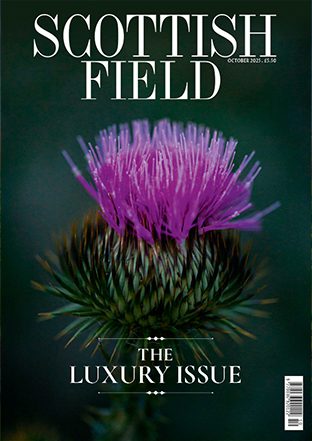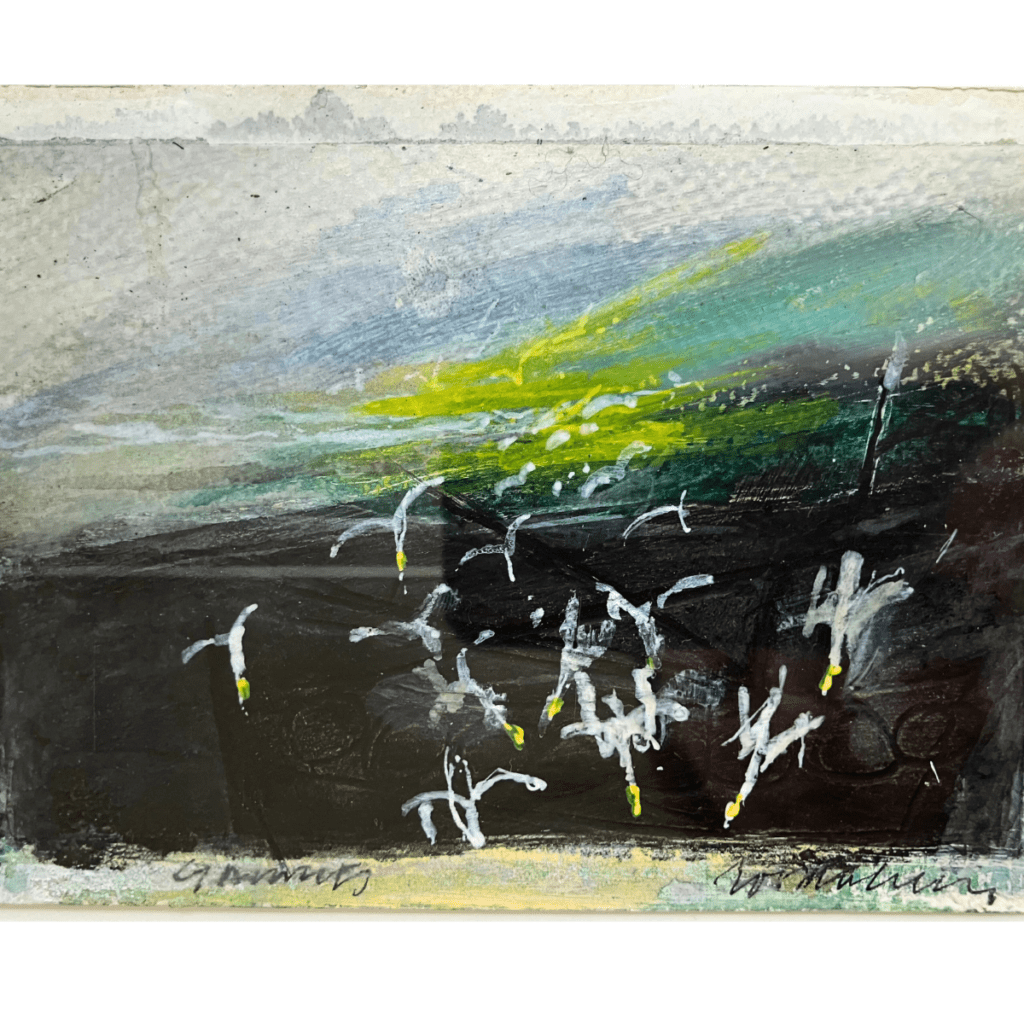
Renowned Scottish artist Will Maclean exhibits new work in Ullapool
As part of Ullapool’s inaugural Art Week, renowned Scottish artist Will Maclean is exhibiting new works under the title of Ghost Boats in the Ceilidh Place Bookshop Porch.
Jon Miller explores this incredible work which looks into Scotland’s relationship with the sea.
The history of the Highlands and the west coast are often a part of Will Maclean’s work. He has long examined maritime cultures to interrogate ideas about traditions and memory.
And that has often included looking at his own personal history – his father was a native of Polbain in Coigach.
In the past he has used assemblages and sculpture to construct works in which objects and implements associated with sea-going cultures gain symbolic and totemic potency.
He elevates the everyday routines and practices of those who work the seas and shores to a quasi-religious, if not pagan, ritualistic significance.
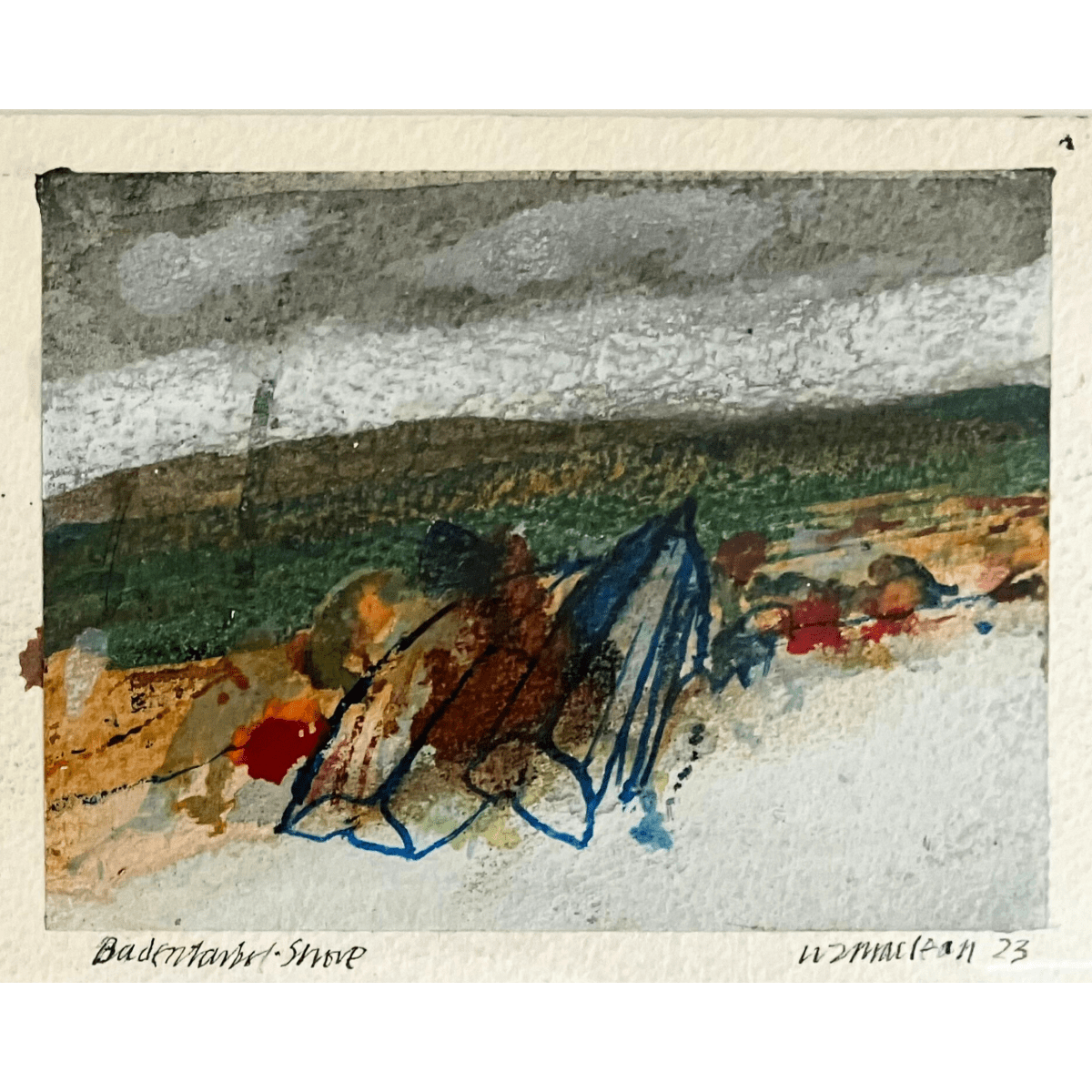
Badentarbet Shore, Will Maclean.
The works in this recent exhibition, Ghost Boats, include 23 small mixed-media paintings on watercolour paper, postcard-sized, each accompanied by a short text.
These texts range from extracts from poems by Angus Martin, John Burnside and the bard Neil Macleod of Polbain.
Elsewhere, there are quotes from fishermen, skippers and the Lewis-born poet and novelist Donald S. Murray.
Almost all of these works involve fishing boats, trawlers or skiffs (sgoth – the traditional red-sailed fishing boat of the west coast).
As can be gleaned from the exhibition title, Maclean is memorialising the decline of the west coast fishing industry, specifically the Ring Net herring fishing in Skye and Loch Fine and the Bag Net fishing tradition of Coigach in Wester Ross.
In many of the works, boats are depicted in outline, the landscape visible through their lines and shapes.
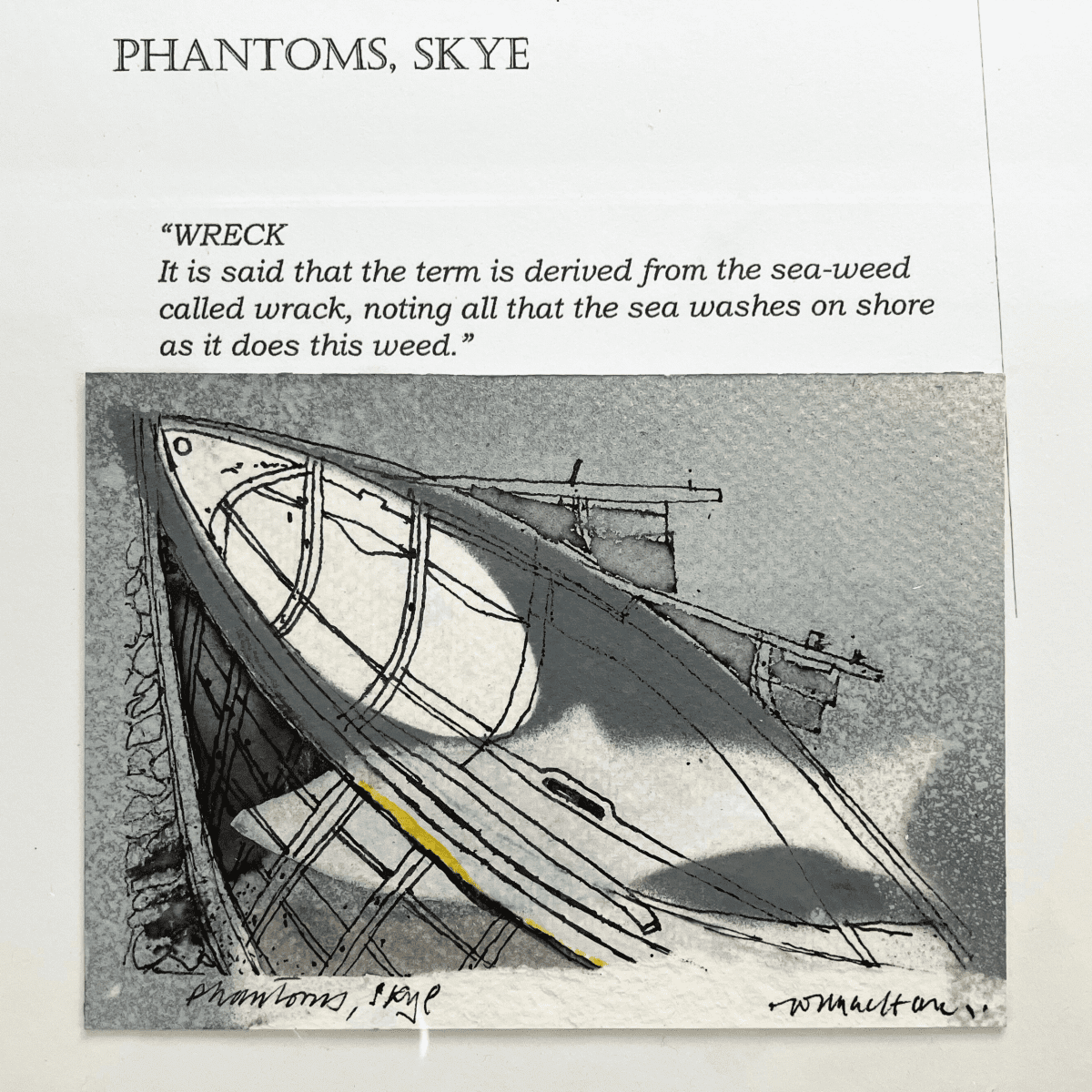
Phantoms Skye, Will Maclean
Sometimes, as in The Old Sail Boat, the boats are drawn in white ink to give them a ghostly quality, adding to the sense that they are embedded in the landscape, still sailing the dim shores of memory.
In Ghost Pair, a painting in greys and whites, a ghost trawler is accompanied by serried ranks of ghost fish – not only are the boats and traditions vanishing but the great shoals that used to swim the west coast of Scotland.
Ghost Boats II has chart positions as if the trawler still hauls in its nets in some afterlife or where a mariner could plot a course to see the ghost of the old trawler ploughing the waves.
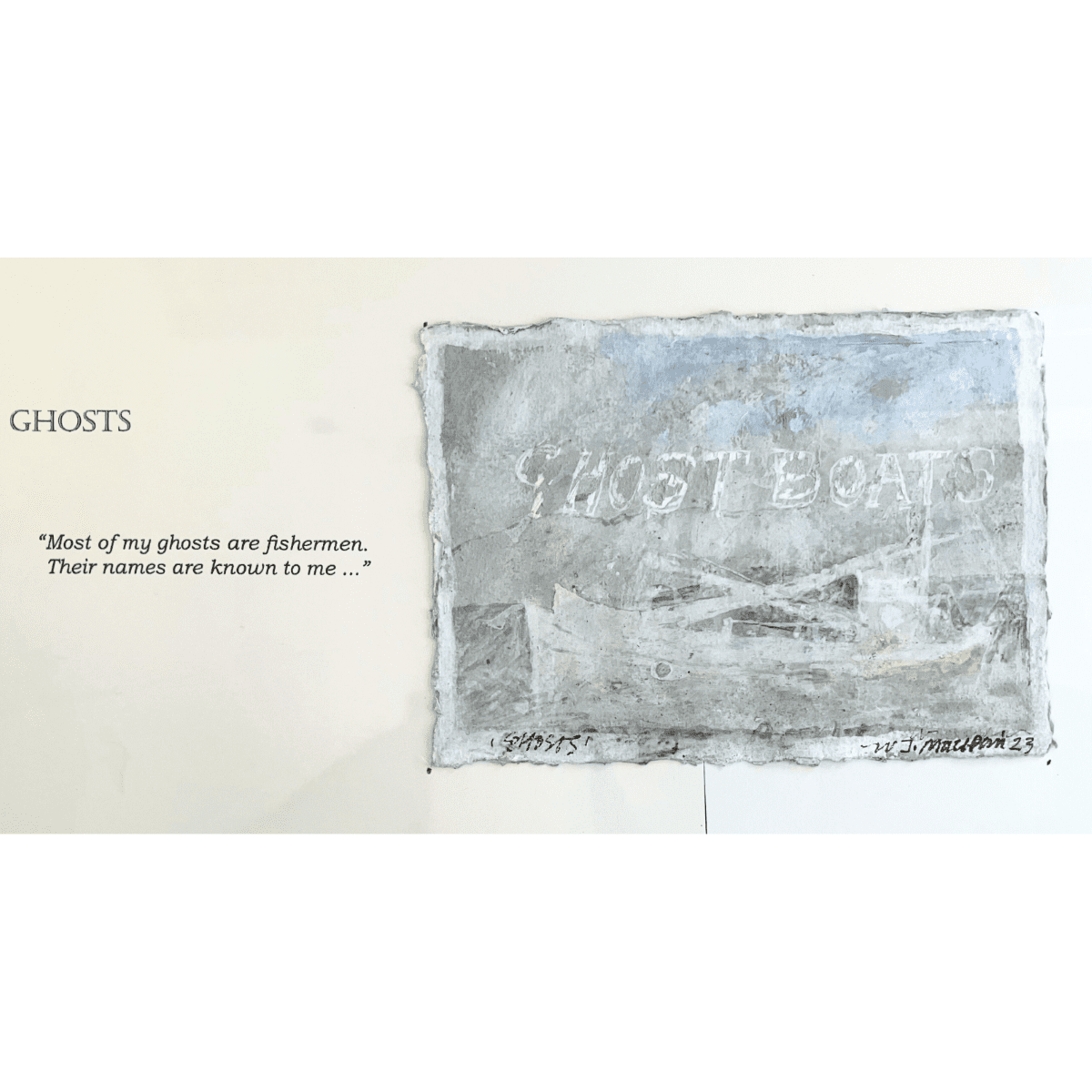
Ghosts, Will Maclean
Maclean’s paintings, despite their small scale, are textured and layered, scratched back to distress the surface like the worn hulls of trawlers.
Metaphorically they suggest the layering of time and the wearing away of memory.
Postcards are artefacts of time – they are sent into the future when we post them and are received in the present, but recount to the reader events that have already happened several days or weeks before.
Maclean’s images set off a similar confusion or melding of time in his use of the postcard as a form and structural device – as if we are reading a message or witnessing a history.
At times, there is an imprecision in the finishing of the painting – colours bleed from the frame onto the white of the underlying watercolour paper – again suggesting a temporariness or time leaking from one era into the next.
This is a compact but powerful exhibition which allows us to imagine these ghost boats still gracing the harbours and western seaboards of Scotland.
Ghost Boats will run until 21 September.
Read more Culture stories here.
Subscribe to read the latest issue of Scottish Field.
TAGS

